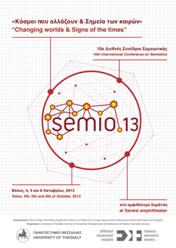Thinking the novelty
Jean-Marie Klinkenberg
Group µ, University of Liege (Belgium)
How can radically new phenomena be identified? How can we detect and measure objects wich have never been described? Furthermore, when attempting to recognize objects by means of iconic signs, how can we identify the referent via the signifier if there is no relatively stable type available?
Semiotic theories that have developed in the structural stream, with essentially descriptive goals, have difficulties to describe the novelty, as they have to fit into a diachronic framework for describing the evolution of semiotic systems. Indeed, for the representatives of the structural approach the essential principle is that internal consistency is enough for the description of a system to be appropriate for its object, and signs are completely autonomous from the world. The doctrine is thus founded upon an abstract and disembodied rationality, fearful for the purity of its models, and leads to eschew the question of the contact point between the world and the signs.
The study of the novelty requires a embodied perspective. The production of novelty, as the decision to identify a pattern as new, are indeed pragmatic process in which are working interpretative and rhetorical modules.
The lecture will evidence an active principle in both class of modules: the mediation. This term (as used by Lévi-Strauss) designates the new conjunctions that can develop between the opposite terms of a structure. By questioning the oppositions which structure meaning and which therefore constitute the basis of encyclopaedias, all mediations in fact end up reorganising those encyclopaedias. The concept thus allows semiotics to be endowed with a dynamic and evolutionary aspect.



